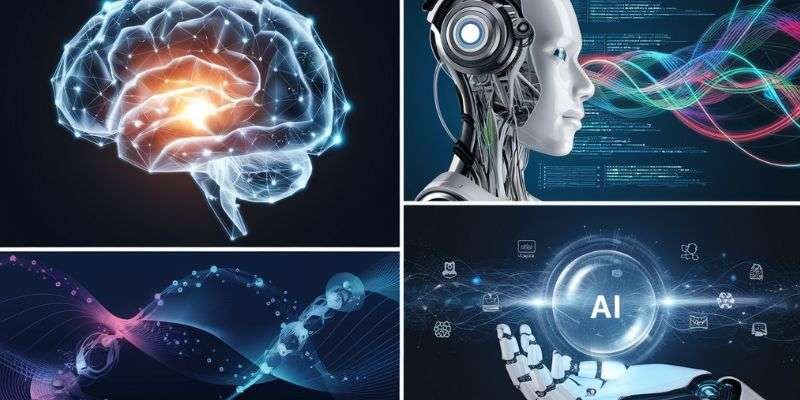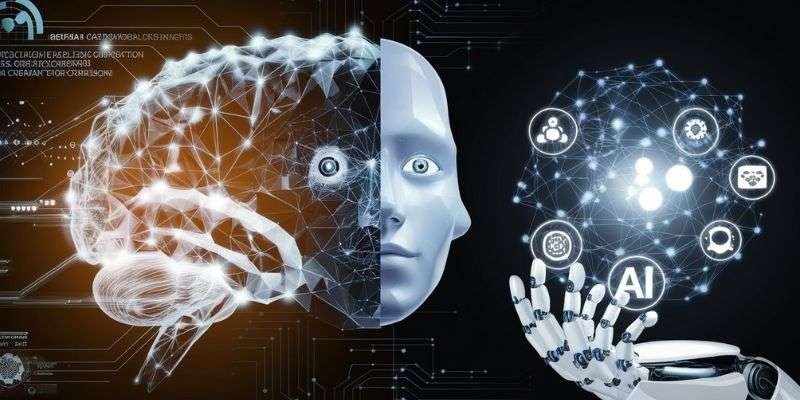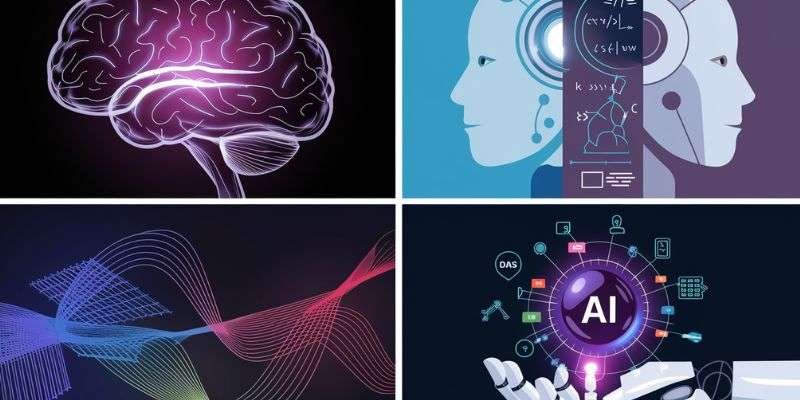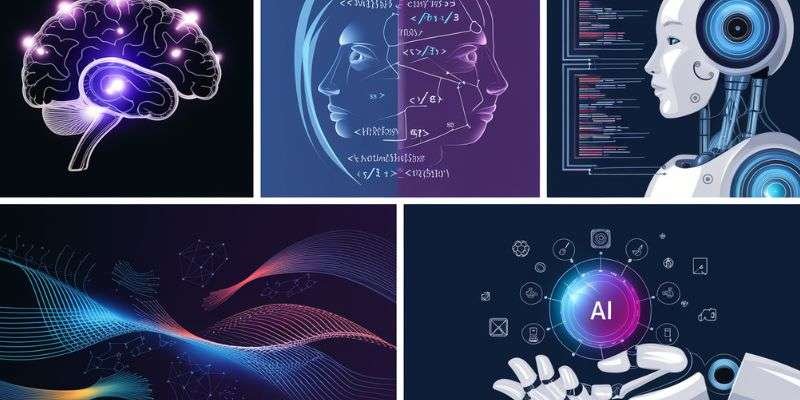
Navigating the complex landscape of artificial intelligence can be daunting without a solid grasp of ai terms. This comprehensive glossary aims to demystify the essential terminology in AI, providing clear definitions and explanations for both beginners and seasoned professionals. From machine learning algorithms to neural network architectures, understanding these ai terms is crucial for anyone looking to engage with or implement AI technologies effectively.
Understanding the Basics of AI Terminology
The field of Artificial Intelligence (AI) is rife with specialized terminology that can be overwhelming to newcomers. This section aims to break down the fundamental concepts and provide a clear understanding of the core ai terms that form the foundation of this revolutionary technology.
Defining Artificial Intelligence
Artificial Intelligence, often abbreviated as AI, refers to the development of computer systems capable of performing tasks that typically require human intelligence. These tasks include visual perception, speech recognition, decision-making, and language translation.
At its core, AI aims to create machines that can mimic cognitive functions associated with the human mind, such as learning and problem-solving. The term was coined in 1956 by John McCarthy, who defined it as “the science and engineering of making intelligent machines.”
There are two main categories of AI:
- Narrow AI (or Weak AI): Designed to perform a specific task, such as voice recognition or playing chess.
- General AI (or Strong AI): Possesses the ability to understand, learn, and apply intelligence broadly, similar to a human.
While narrow AI is prevalent in our daily lives through virtual assistants and recommendation systems, general AI remains a theoretical concept that researchers are actively working towards.
Key Concepts in Machine Learning

Machine Learning (ML) is a subset of AI that focuses on the development of algorithms that enable computers to learn from and make decisions or predictions based on data. It’s the driving force behind many of the AI applications we encounter daily.
There are three primary types of machine learning:
- Supervised Learning: The algorithm learns from labeled training data, attempting to model the relationship between input features and target variables. Examples include spam detection in emails or predicting house prices based on features like size and location.
- Unsupervised Learning: The algorithm works with unlabeled data, trying to find patterns or structures within it. Clustering algorithms, which group similar data points together, fall under this category.
- Reinforcement Learning: This involves an agent learning to make decisions by performing actions in an environment to maximize a reward. It’s commonly used in robotics and game-playing AI.
Key terms in machine learning include:
- Feature: An individual measurable property of the phenomenon being observed.
- Model: A specific representation learned from data by a machine learning algorithm.
- Training: The process of teaching a model using a machine learning algorithm and training data.
- Inference: Using a trained model to make predictions or decisions without being explicitly programmed to perform the task.
Neural Networks and Deep Learning Explained
Neural Networks are a set of algorithms inspired by the human brain, designed to recognize patterns. They interpret sensory data through a kind of machine perception, labeling or clustering raw input.
The basic structure of a neural network includes:
- Input Layer: Receives the initial data.
- Hidden Layers: Process the data through weighted connections.
- Output Layer: Produces the final result or prediction.
Deep Learning is a subset of machine learning that uses neural networks with multiple layers (hence “deep”). These deep neural networks can automatically learn hierarchical features from data, making them particularly effective for tasks like image and speech recognition.
Key concepts in deep learning include:
- Convolutional Neural Networks (CNNs): Primarily used for image processing tasks.
- Recurrent Neural Networks (RNNs): Designed for sequential data like text or time series.
- Generative Adversarial Networks (GANs): Used to generate new, synthetic instances of data that can pass for real data.
Understanding these fundamental ai terms provides a solid foundation for delving deeper into the world of artificial intelligence and its myriad applications.
Exploring AI Terms and Conditions

As AI technologies continue to evolve and integrate into various aspects of our lives, it’s crucial to understand not just the technical terminology, but also the legal and ethical frameworks that govern their use. This section delves into the important ai terms related to the conditions and agreements surrounding AI implementation.
Importance of Legal Agreements in AI
Legal agreements in AI serve as critical safeguards, defining the rights, responsibilities, and limitations of both AI developers and users. These agreements are essential for several reasons:
- Protection of Intellectual Property: AI systems often involve proprietary algorithms and datasets. Legal agreements help protect these valuable assets from unauthorized use or replication.
- Liability Clarification: In case of errors or unintended consequences resulting from AI decisions, these agreements delineate who bears responsibility.
- Data Privacy and Security: With AI systems often processing vast amounts of personal data, legal agreements ensure compliance with data protection regulations like GDPR or CCPA.
- Ethical Use Guidelines: They set boundaries for the ethical application of AI, preventing misuse or abuse of the technology.
- Performance Expectations: These agreements often specify the expected performance levels of AI systems, providing a benchmark for quality and reliability.
By clearly defining these aspects, legal agreements in AI foster trust between stakeholders and provide a framework for resolving potential disputes.
Common Terminology in AI Contracts
AI contracts often contain specialized language that may be unfamiliar to those outside the field. Here are some common ai terms you might encounter:
Model Training: This refers to the process of teaching an AI system to make predictions or decisions based on data. AI contracts often specify who provides the training data and who owns the resulting model.
Algorithm Auditing: The practice of examining an AI algorithm for potential biases or errors. Contracts may require regular auditing to ensure fairness and accuracy.
Data Processing Agreement (DPA): A contract that regulates the processing of personal data, often required when AI systems handle sensitive information.
Service Level Agreement (SLA): Defines the level of service expected from an AI system, including metrics like uptime, response time, and accuracy.
Explainability Clause: Requires the AI provider to be able to explain how the AI system arrives at its decisions or predictions, which is crucial for transparency and trust.
Understanding these terms is crucial for anyone involved in negotiating or implementing AI contracts, as they define the core aspects of the AI system’s operation and governance.
Rights and Responsibilities in AI Usage

The use of AI systems comes with a set of rights and responsibilities for both developers and users. These are often explicitly stated in AI terms and conditions:
User Rights:
- Right to Privacy: Users have the right to know how their data is being collected, used, and protected by AI systems.
- Right to Explanation: In many jurisdictions, users have the right to understand how AI-driven decisions that affect them are made.
- Right to Human Intervention: For significant decisions, users often have the right to request human review of AI-generated outcomes.
Developer Responsibilities:
- Duty of Care: AI developers have a responsibility to ensure their systems are safe and do not cause unintended harm.
- Transparency: There’s an obligation to be open about the capabilities and limitations of AI systems.
- Non-Discrimination: Developers must strive to create AI systems that are fair and do not discriminate against protected groups.
User Responsibilities:
- Proper Use: Users are typically required to use AI systems as intended and not attempt to manipulate or misuse them.
- Data Accuracy: When providing data to AI systems, users often have a responsibility to ensure its accuracy.
- Reporting Issues: Users may be required to report any observed errors or unexpected behaviors in the AI system.
By clearly defining these rights and responsibilities, AI terms and conditions create a framework for the ethical and effective use of AI technologies.
Crafting AI Terms and Conditions
Creating comprehensive and effective terms and conditions for AI systems is a complex but crucial task. These documents serve as the legal and ethical backbone for AI implementation, protecting both the developers and users while ensuring responsible use of the technology.
Creating Effective Legal Agreements for AI Applications
Developing legal agreements for AI applications requires a nuanced understanding of both the technology and the law. Here are key considerations:
Specificity: AI terms and conditions should be tailored to the specific AI application. A one-size-fits-all approach is rarely effective given the diverse nature of AI technologies.
Clarity: While technical language is often necessary, the agreement should be as clear and understandable as possible, even for non-experts.
Flexibility: Given the rapidly evolving nature of AI, agreements should be flexible enough to accommodate technological advancements and changing regulations.
Compliance: Ensure that the agreement aligns with relevant laws and regulations, which may vary depending on the jurisdiction and the specific application of the AI.
Stakeholder Involvement: Drafting these agreements often requires input from various stakeholders, including legal experts, AI developers, ethicists, and potential users.
By focusing on these aspects, organizations can create robust legal frameworks that foster trust and protect all parties involved in AI development and usage.
Essential Clauses to Include in AI Agreements
When drafting AI terms and conditions, certain clauses are particularly important:
Definition of AI System: Clearly define the AI system in question, its purpose, capabilities, and limitations.
Data Usage and Ownership: Specify how data will be collected, used, stored, and who retains ownership rights over various types of data involved.
Intellectual Property Rights: Clarify who owns the AI system, its algorithms, and any innovations resulting from its use.
Liability and Indemnification: Outline the extent of liability for errors or harm caused by the AI system and include indemnification clauses where appropriate.
Performance Metrics: Define how the AI system’s performance will be measured and what constitutes acceptable performance.
Maintenance and Updates: Specify responsibilities for maintaining and updating the AI system to ensure ongoing effectiveness and security.
Termination Conditions: Clearly state the circumstances under which the agreement can be terminated and the process for doing so.
Dispute Resolution: Include mechanisms for resolving disputes that may arise from the use or performance of the AI system.
These clauses form the backbone of a comprehensive AI agreement, providing clarity and protection for all parties involved.
Best Practices for Drafting AI Terms
When crafting AI terms and conditions, following best practices can help ensure the agreement is both legally sound and practically effective:
Use Clear Language: While technical terms are often necessary, strive to make the agreement as understandable as possible. Define complex terms and avoid unnecessary jargon.
Be Comprehensive: Cover all aspects of the AI system’s lifecycle, from development and deployment to maintenance and potential decommissioning.
Stay Current: Regularly review and update the agreement to reflect changes in technology, laws, and best practices in AI.
Consider Ethical Implications: Include clauses that address the ethical use of AI, such as fairness, transparency, and accountability.
Involve Multidisciplinary Expertise: Engage legal experts, AI developers, ethicists, and domain specialists in the drafting process to ensure all perspectives are considered.
Plan for the Unexpected: Include clauses that address potential scenarios such as AI system errors, data breaches, or unexpected AI behaviors.
Be Transparent About Limitations: Clearly state what the AI system can and cannot do to manage user expectations and mitigate liability risks.
By adhering to these best practices, organizations can create AI terms and conditions that are not only legally robust but also foster trust and responsible use of AI technologies.
Quick Reference Guide to AI Terms
Navigating the world of Artificial Intelligence can be challenging without a solid grasp of the terminology. This quick reference guide aims to provide a concise yet comprehensive overview of essential ai terms, making it easier for both beginners and professionals to understand and discuss AI concepts.
Must-Know Vocabulary for Beginners
For those new to the field of AI, certain terms form the foundation of understanding more complex concepts. Here’s a list of must-know ai terms for beginners:
Artificial Intelligence (AI): The simulation of human intelligence processes by machines, especially computer systems.
Machine Learning (ML): A subset of AI that focuses on the development of algorithms that enable computers to learn from and make decisions based on data.
Deep Learning: A subset of machine learning based on artificial neural networks with multiple layers.
Neural Network: A computing system inspired by biological neural networks, consisting of interconnected nodes or “neurons” that process and transmit information.
Algorithm: A set of rules or instructions given to an AI system to help it learn and make decisions.
Training Data: The initial dataset used to teach a machine learning model.
Supervised Learning: A type of machine learning where the algorithm learns from labeled training data.
Unsupervised Learning: A type of machine learning where the algorithm learns from unlabeled data.
Reinforcement Learning: A type of machine learning where an agent learns to make decisions by performing actions in an environment to maximize a reward.
Natural Language Processing (NLP): The ability of a computer program to understand human language as it is spoken or written.
Understanding these fundamental ai terms provides a solid foundation for delving deeper into the world of artificial intelligence.
Frequently Used Acronyms in AI
The field of AI is rife with acronyms that can be confusing for newcomers. Here’s a list of frequently used acronyms and their meanings:
AI: Artificial Intelligence
ML: Machine Learning
DL: Deep Learning
NN: Neural Network
CNN: Convolutional Neural Network
RNN: Recurrent Neural Network
LSTM: Long Short-Term Memory
GAN: Generative Adversarial Network
NLP: Natural Language Processing
CV: Computer Vision
RL: Reinforcement Learning
SVM: Support Vector Machine
KNN: K-Nearest Neighbors
PCA: Principal Component Analysis
API: Application Programming Interface
Familiarizing yourself with these acronyms can greatly enhance your ability to read and understand AI-related content and discussions.
Understanding Technical Jargon in Artificial Intelligence
As you delve deeper into AI, you’ll encounter more specialized technical jargon. Here are some advanced ai terms explained:
Backpropagation: A method used to calculate the gradient of the loss function with respect to the weights in a neural network.
Overfitting: When a machine learning model learns the training data too well, including its noise and fluctuations, leading to poor performance on new, unseen data.
Hyperparameters: Parameters whose values are set before the learning process begins, as opposed to parameters that are learned during training.
Epoch: One complete pass through the entire training dataset during the training of a machine learning model.
Activation Function: A function used in neural networks to introduce non-linearity, allowing the network to learn more complex patterns.
Gradient Descent: An optimization algorithm used to minimize the loss function by iteratively moving in the direction of steepest descent.
Transfer Learning: A technique where a model developed for a task is reused as the starting point for a model on a second task.
Ensemble Learning: A technique that combines multiple machine learning models to produce better predictive performance than could be obtained from any of the constituent models alone.
Bias-Variance Tradeoff: The property of a model that the variance of the parameter estimates across samples can be reduced by increasing the bias in the estimated parameters.
Feature Extraction: The process of reducing the number of resources required to describe a large set of data accurately.
Understanding these more advanced ai terms will allow you to engage in deeper, more technical discussions about artificial intelligence and its applications.
Conclusion
As we’ve explored in this comprehensive glossary, the field of Artificial Intelligence is rich with specialized terminology that forms the foundation of understanding and working with AI technologies. From the basic concepts of machine learning to the intricacies of neural networks and deep learning, these ai terms are essential for anyone looking to navigate the rapidly evolving landscape of AI.
Leave a Reply